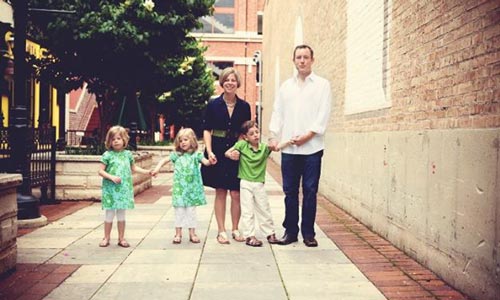Treasured Days
The days are long, but the years are short. Never has this seemed more true than for our son Noah.
While we focused on loving and caring for our children, we spent most of Noah’s short life researching, fundraising, collaborating, and searching for a cure. And even as we faced the harsh reality that a cure would not come soon enough for Noah, we plunged ahead with the many changes that life demanded.
Our home became center stage to a juggling act of caregivers, medications, emergency room visits, and all-night vigils when Noah or Laine couldn’t sleep because seizures wracked their bodies. When he was six years old, Noah started his feeding tube, was confined to a wheelchair, and stopped talking. We were thrilled in the fall of 2011 when he seemed to communicate, “Yes” and “No” by blinking his eyes. But it didn’t last long. It was devastating when he stopped smiling.


Inspiring Spirit
Every day was a struggle. We carried Noah back and forth to his wheelchair, provided food in his feeding tube, and gently wiped his mouth throughout the day. It was devastating to watch our child lose skills, function, and independence and not be able to do a thing about it. Yet even while Noah’s body deteriorated, his spirit continued to inspire us.
His eyes always lit up when he saw his sisters, particularly little Laine with whom he developed a special relationship. His body twitched with glee when we played the movie Cars and Lightning McQueen spoke. And when he had a fit of frustration, he relaxed and looked up at us with trusting love when we held him in his room.
We never knew exactly what tomorrow would hold, but we saw glimpses of the unbearable challenges in our future. The disease is ruthless. At this time it is fatal, usually between the ages of eight and 12. Each day of medications, feeding tubes, and wheelchairs was long for our precious son, but we treasured every one. For his years were far too short.
Early Signs
Life wasn’t always this way. Noah developed normally as an infant and toddler. He talked and giggled, loved watching trains and wrestling with Daddy, and was always on hand to get into a little silly mischief. He loved baseball, and as he grinned under his toddler baseball cap we used to dream about him becoming a pitcher for the Chicago Cubs.
When Noah turned three, we noticed that he exhibited a speech delay and began having tremors. Our first neurologist said that these symptoms were normal for a boy, and that he should grow out of them. Months later, Noah collapsed and stopped breathing. We had no idea what had happened, but the doctors told us it was probably a seizure. At the time, it was the most frightening day of our lives.
A couple of weeks later, Noah had another seizure and was diagnosed with childhood epilepsy. About nine months after the epilepsy diagnosis, an MRI scan revealed some atrophy of his brain, but no cause. We also noticed Noah’s speech began regressing, and he had difficulty performing simple activities such as eating with a fork and brushing his teeth.




A Guiding Light
After several months, a friend of the family put us in touch with Duke Children’s Hospital. Within weeks, Jen, Grandma Jacque, and Noah drove 850 miles to Duke University for a two-week evaluation. The team ran every test imaginable to determine the cause of his seizures.
While at Duke, Noah started the Ketogenic Diet, a special regimen to control his seizures. We were thrilled when Noah responded very well to the diet. His seizures were reduced dramatically and the fog around him seemed to lift. Noah, Jen, and Grandma Jacque returned home after two weeks and Noah was doing great… we were getting our little boy back.
News No Parent Wants To Hear
On March 17, 2009, our lives changed in a way no one could imagine. As we were sitting down for our St. Patrick’s Day dinner, we received a call from Noah’s neurologist at Duke Children’s Hospital. Two of the tests which had been sent to separate labs came back confirming the same diagnosis. Noah was diagnosed with Late Infantile Neuronal Ceroid Lipofuscinosis, often referred to as CLN2 Batten disease. Over the next few hours as we researched the disease, our world quickly crumbled. It was never the same again.


We Will Not Stop Fighting
Today we live in close contact with families around the world who also have children with CLN2 Batten disease. We have found great comfort in our new extended “family,” and rely daily on the amazing outpouring of love, prayers, and support that we have received from our family, friends, community, and supporters around the world.
Noah’s Hope, and ours, is that researchers will soon discover more options for delaying symptoms of this devastating disease. While we focused on loving and nurturing our children, we continued to fight tirelessly to make Noah’s Hope a reality. We are committed to continuing our efforts to advocate, research, raise funds, and inform the community in memory of our children.
We Need Your Help
Please join us as we work to give the gift of childhood back to children with Batten disease.
